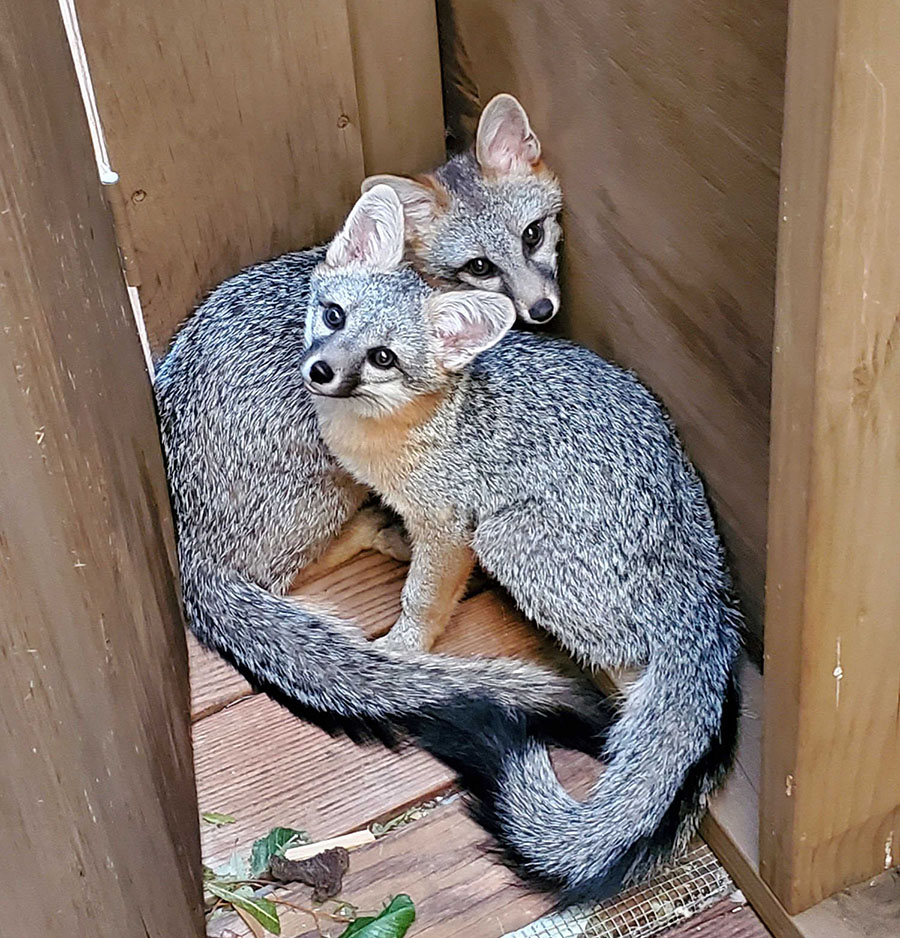The Climbing Fox
By Cori Carlson, Administrative Assistant

CWC’s two Gray Fox patients
By Brittany Moser
Gray Foxes may be named for their gray coats, but they also have a distinctive reddish-brown coloring along their sides and long bushy tails. The most common Fox in California, they live in woodland and forested areas in a range that runs all the way from southern Canada to South America. So far this year, California Wildlife Center has admitted two of the young Foxes. Last year we had a total of five Gray Foxes in care.
The first Fox arrived at the end of April with a hook embedded in his left front leg and a skin tear on the right front leg. These injuries were operated on and healed in about three weeks. In mid-May, we received a healthy, but orphaned second Fox. While these patients are in our care, wildlife technicians provide enrichment activities such as hiding food in boxes for the Foxes to open and search through. We also release live crickets to help them hone their hunting skills. It is important to try to make the enclosures as much like the animal’s home in the wild as possible. One of our technicians used branches and rods to create opportunities for the pups to climb and practice scaling trees.
Like cats, Gray Foxes have the ability to retract their claws and are the only member of the fox family who can climb trees. This unique ability allows them to escape predators and helps them gain an advantage over their prey. They have vertical pupils enabling them to see and hunt in the dark. Their keen eyesight, along with their excellent hearing, comes in handy as they do most of their hunting at night.
As omnivores, the Gray Fox’s diet includes fruits, plants, rabbits, rodents, squirrels, crickets, grasshoppers, and scavenged animals.
Gray Foxes have their kits in April. By the time those pups are four months old, they have learned to hunt with their parents and are ready to forage independently. By the fall, the young Foxes typically leave as they have reached maturity and are ready to start their own families. We plan to release our two Fox patients in the fall as well.
